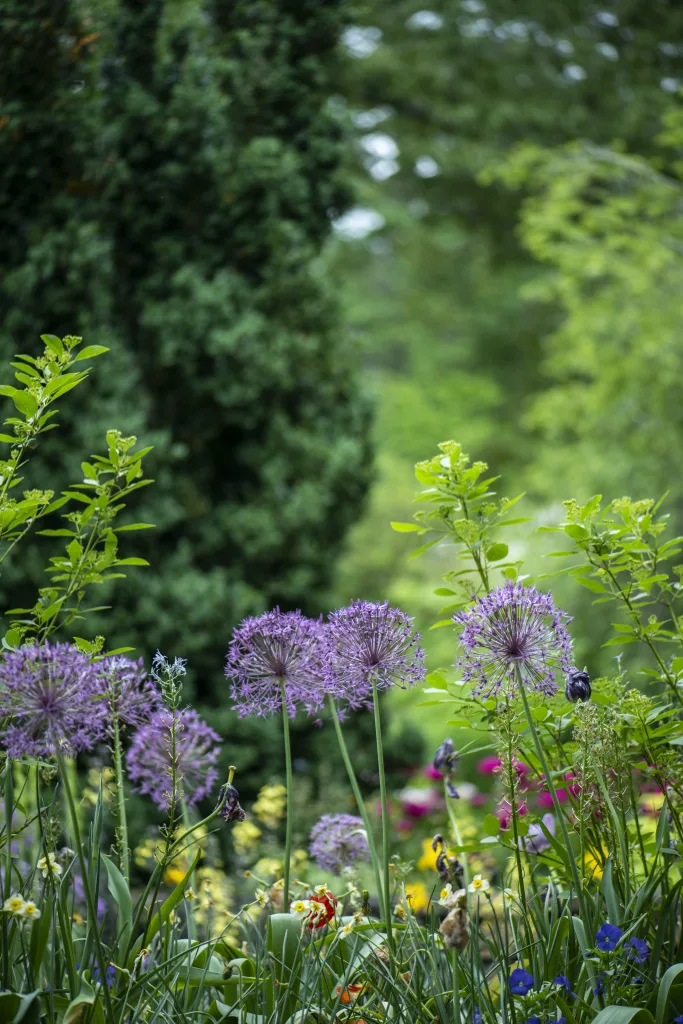Imagine stepping into a tranquil oasis, surrounded by meticulously placed stones, raked gravel, and carefully pruned trees. As you wander through this serene paradise, you can’t help but wonder: what is the significance of all this empty space? In a Zen garden, the presence of emptiness is not a void to be filled, but rather a profound element that enriches the experience. Join us as we explore the importance of empty space in a Zen garden, discovering how it cultivates a sense of calm, balance, and contemplation in our busy lives.

Understanding Zen Gardens
Zen gardens, also known as Japanese rock gardens or dry landscape gardens, are tranquil and contemplative spaces that have been an integral part of Japanese culture for centuries. Rooted in the principles of Zen Buddhism, these gardens are meticulously designed to promote a sense of serenity, harmony, and inner peace. As you explore the concept of Zen gardens, you will come to appreciate the key role that empty space plays in their creation and the profound influence it has on the overall aesthetic and ambiance.
Zen Garden Origins
Zen gardens originated in Japan during the Muromachi period (1336-1573), when Zen Buddhism greatly influenced the country’s culture. The gardens were initially inspired by the Chinese philosophy of Daoism and the practice of meditation. The belief in the harmony of nature and the desire to create a space for introspection and tranquility led to the development of these unique gardens.
Elements of a Zen Garden
Zen gardens are characterized by their minimalistic and carefully crafted design. They typically consist of rock or gravel formations symbolizing mountains and water features representing lakes or rivers. Moss or carefully arranged plants add a touch of greenery, while strategically placed stones represent islands or other natural elements. The absence of excessive vegetation and the deliberate use of empty space are key components that contribute to the overall aesthetic and tranquility of a Zen garden.
Significance of Zen Gardens in Japanese Culture
Zen gardens hold great significance in Japanese culture and are deeply rooted in the principles of Zen Buddhism. They are viewed as physical representations of the spiritual and philosophical concepts associated with Zen, offering a space for meditation, reflection, and contemplation. These gardens provide a haven amidst the busy and chaotic world, allowing individuals to find inner peace and reconnect with nature.
Key Role of Empty Space in Zen Gardens
Definition of Empty Space in Zen Gardens
Empty space, known as “Ma” in Japanese, refers to the intentional absence of physical or visual elements in a Zen garden. It is the empty canvas on which the other elements of the garden are showcased, allowing for a sense of spaciousness, calm, and harmony. This concept of emptiness extends beyond the physical landscape and encompasses the mental and spiritual realms as well.
Philosophical Underpinnings of Empty Space
Empty space in Zen gardens is deeply rooted in Zen Buddhist philosophy. It reflects the concept of “mu” or “nothingness,” emphasizing the importance of emptiness as a means to transcend the ego and achieve a state of enlightenment. The intentional voids in a Zen garden invite contemplation and encourage individuals to let go of attachment to material possessions and desires, fostering a sense of inner stillness and clarity of mind.
Use of Empty Space in Garden Design
Empty space is an essential design element in Zen gardens, as it allows for the harmonious interplay between elements and creates a sense of balance and tranquility. By strategically placing rocks, plants, and other features within the empty space, garden designers create a visual rhythm that encourages the viewer to appreciate the beauty and serenity of the garden. The deliberate use of negative space also provides a sense of openness, inviting visitors to engage with the garden on a deeper level.
Philosophy Behind Zen Gardens and Empty Space
Principles of Zen Buddhism
Zen Buddhism, with its emphasis on mindfulness and meditation, has a profound influence on the design philosophy behind Zen gardens. The teachings of Zen Buddhism emphasize the importance of being present in the moment, letting go of attachments, and embracing the transient nature of existence. These principles are reflected in the deliberate use of empty space in Zen gardens, inviting individuals to let go of external distractions and focus on the present moment.
Concepts of Space and Emptiness in Zen Buddhism
In Zen Buddhism, space and emptiness are not seen as mere absences but as essential elements for spiritual growth and self-realization. Emptiness is viewed as an opportunity for potential and possibility, representing the fertile ground from which all manifestations arise. Space, on the other hand, represents the interconnectedness and fluidity of all things, providing a sense of expansiveness and liberation from attachment.
How Zen Philosophy Translates to Garden Aesthetics
The philosophy of Zen Buddhism deeply influences the aesthetics of Zen gardens, particularly in their use of empty space. The deliberate placement of rocks, plants, and other elements within the empty space reflects the balance between yin and yang, contrasting elements, and the transient nature of existence. By creating a harmonious composition of emptiness and form, Zen gardens embody the core principles of Zen Buddhism and evoke a sense of tranquility and enlightenment.
Empty Space Versus Occupied Space in Zen Gardens
Balancing Elements in a Zen Garden
Zen gardens achieve harmony and balance by carefully balancing elements of empty space with occupied space. While empty space is essential for creating a sense of openness, reflection, and tranquility, occupied space adds visual interest and represents the manifestations of form and life. The interplay between these two types of space creates a dynamic and engaging environment that invites contemplation and promotes a sense of harmony.
How Zen Gardens Contrast with Western Garden Design
The design principles of Zen gardens starkly contrast with traditional Western garden design, which often prioritizes abundance, symmetry, and ornate features. Zen gardens, on the other hand, embrace simplicity and minimalism, allowing for a deeper appreciation of the beauty in simplicity. Rather than filling every available space, Zen gardens utilize empty space to create a sense of spaciousness and tranquility, encouraging the viewer to find beauty in the simplicity of the design.
Dynamic between Empty and Occupied Space
The dynamic relationship between empty and occupied space is crucial in Zen garden design. While occupied space represents the physical features and manifestations of form, empty space serves as the backdrop that allows these elements to shine. Empty space creates a sense of serenity and contemplation, while the presence of rocks, plants, and other elements adds visual interest and depth. The interplay between these two types of space contributes to the overall aesthetic and harmonious ambiance of a Zen garden.

Zen Gardens as Representation of Nature
Zen Gardens Simulating Natural Landscapes
Zen gardens are designed to emulate and capture the essence of the natural landscape, while simultaneously providing a space for meditation and reflection. By strategically arranging rocks, gravel, and plants, garden designers create miniature landscapes that evoke the feeling of mountains, rivers, and other natural elements. The intentional use of empty space within these representations further enhances the connection to nature and allows individuals to experience a sense of tranquility and oneness with the natural world.
Role of Empty Space in Reflecting Natural Phenomena
Empty space in Zen gardens serves as a canvas upon which natural phenomena can be reflected and contemplated. Just as still water in a pond reflects the surrounding environment, empty space in Zen gardens invites individuals to reflect upon the impermanence and interconnectedness of all things. It serves as an invitation to observe and appreciate the ever-changing beauty of nature, fostering a deep sense of appreciation and harmony with the natural world.
Interplay of the Four Elements
In Zen gardens, the interplay of the four elements – earth, water, fire, and air – is often represented through the deliberate arrangement of rocks, gravel, plants, and empty space. Each element contributes to the overall aesthetic and symbolism of the garden. Earth is represented by rocks and stones, water by gravel or sand raked to resemble flowing water, fire by carefully arranged plants or moss, and air by the open spaces that allow for a sense of expansiveness and freedom.
The Tranquil Ambience of Zen Gardens and Its Relation with Empty Space
Zen Gardens as a Space for Meditation and Reflection
Zen gardens are commonly used as spaces for meditation and reflection, providing a sanctuary away from the demands and distractions of everyday life. The intentional use of empty space in these gardens cultivates a sense of stillness and serenity, allowing individuals to let go of intrusive thoughts and find a deeper connection with themselves and the surrounding environment. With every step and every breath, Zen gardens invite visitors to let go of the external world and turn their attention inward.
How Balance and Harmony Create a Tranquil Atmosphere
The balance and harmony achieved through the deliberate use of empty space in Zen gardens contribute to the creation of a tranquil atmosphere. By carefully placing rocks, plants, and other elements in relation to the empty space, garden designers create a visual rhythm that promotes a sense of calmness and serenity. The intentional absence of excessive decoration or clutter allows for a clear and unobstructed mind, fostering a peaceful and tranquil ambiance that encourages relaxation and introspection.
Empty Spaces Amplifying Tranquility
Empty spaces in Zen gardens play a crucial role in amplifying the sense of tranquility and peace experienced by visitors. The deliberate voids act as a visual respite, providing resting places for the eyes and allowing for a moment of mental stillness. The spaciousness and openness created by empty space evoke a sense of freedom and lightness, further enhancing the overall atmosphere of tranquility and mindfulness in a Zen garden.

Design Techniques Utilizing Empty Space in Zen Gardens
Basic Techniques for Constructing a Zen Garden
Creating a Zen garden requires careful planning and attention to detail. Basic design techniques include defining boundaries through the use of rocks or bamboo fences, selecting appropriate gravel or sand for the ground, and strategically placing rocks in a natural and harmonious way. Empty space is intentionally incorporated into the design, allowing for the right balance between occupied and empty space. These techniques ensure that the final result is a serene and visually appealing garden that invites contemplation and reflection.
Strategic Placement of Rocks and Plants
Rocks and plants are key elements in Zen garden design, offering opportunities for incorporating empty space. Rocks, whether large or small, are strategically placed to create a sense of depth, stability, and natural harmony. Plants, such as moss or carefully arranged shrubs, add a touch of greenery and softness to the overall composition. By skillfully arranging rocks and plants within the empty space, garden designers create a dynamic and visually pleasing garden that promotes a sense of tranquility and balance.
Arrangement of Sands and Gravels
The arrangement of sands and gravels in Zen gardens is meticulously executed to create patterns that represent flowing water or ripples in a pond. This technique, known as “kare-sansui,” involves raking patterns into the gravel or sand to mimic the movement of water. The deliberate use of empty space within these raked patterns adds the element of stillness and emptiness, allowing for a harmony between the flowing and the static. This technique is symbolic of the transient and ever-changing nature of existence, inviting visitors to contemplate the impermanence and interconnectedness of all things.
Interpretations of Empty Space in Zen Gardens
Different Perceptions of Emptiness in Culture
The concept of emptiness can be interpreted differently across cultures and philosophical traditions. While Western cultures often associate emptiness with a lack or absence, Eastern cultures, particularly in Zen Buddhism, perceive emptiness as a potentiality and a source of infinite possibilities. In Zen gardens, the intentional use of empty space reflects this Eastern perspective, inviting individuals to embrace the limitless potential of the present moment and to let go of attachments and distractions.
How Empty Space Can Influence Mood and Thought
Empty space in Zen gardens has the power to evoke various emotions and influence one’s state of mind. The spaciousness and simplicity created by empty space can induce a sense of calmness and tranquility, allowing visitors to feel a deep sense of relaxation and peace. On a deeper level, empty space can also encourage introspection and contemplation, inspiring individuals to reflect on the interconnectedness of all things and their own place within the universe.
Views of Emptiness and Fullness in Zen Teachings
In Zen teachings, emptiness and fullness are seen as complementary and interconnected rather than opposing concepts. The interconnectedness of emptiness and fullness is illustrated in Zen gardens, where empty space serves as the backdrop for the occupied space, and occupied space finds its meaning and beauty within the context of emptiness. By embracing the interplay between these two states, Zen gardens inspire individuals to transcend dualistic thinking and perceive reality in a more holistic and interconnected way.
Empty Space in Zen Gardens: Case Studies
Famous Zen Gardens and Their Use of Empty Space
Several famous Zen gardens showcase the effective use of empty space in their design. The Ryoan-ji Temple in Kyoto, for example, is renowned for its kare-sansui garden, which features an expansive area of raked gravel with precisely placed rocks. The deliberate arrangement of empty space within the garden allows for contemplation and encourages visitors to explore different perspectives. Other notable examples include the Daisen-in Temple in Kyoto and the Adachi Museum of Art Garden in Yasugi, which both utilize empty space to create a sense of tranquility and harmony.
Comparative Analysis of Different Gardens
When comparing different Zen gardens, it becomes evident that each garden has its unique interpretation and use of empty space. Some gardens emphasize the minimalist approach, with vast open spaces and a sparse arrangement of elements, while others incorporate more vegetation or intricate raked patterns. Regardless of the variation, the purpose remains the same – to create a space for introspection, reflection, and a sense of serenity.
Impressions and Experiences of Visitors
Visitors to Zen gardens often report a profound sense of calmness, tranquility, and peace after spending time in these serene spaces. The deliberate use of empty space, along with the other elements, creates a captivating ambiance that allows individuals to momentarily detach from the stresses of daily life and find solace in the simplicity and beauty of the surroundings. Artists, writers, and spiritual seekers have long sought inspiration and solace in these gardens, finding a connection to nature and themselves through the mindful exploration of empty space.
Implications for Modern Landscape Design
Incorporating Zen Principles in Contemporary Design
The principles of Zen gardens and the use of empty space can serve as a source of inspiration for modern landscape design. Incorporating elements such as simplicity, minimalism, and the intentional use of empty space can create contemporary spaces that promote a sense of calm and tranquility. By embracing the principles of Zen gardens, modern landscape designers can create environments that allow individuals to disconnect from the chaos of the modern world and find a moment of peace and introspection.
Emptiness as a Design Element in Modern Architecture
The concept of empty space can also be applied beyond traditional garden design and into modern architecture. Embracing the idea of emptiness as a design element can create a sense of openness, tranquility, and harmony within architectural spaces. Empty spaces within buildings can provide areas for contemplation, meditation, and reflection, fostering a sense of serenity and well-being. Just as in Zen gardens, the strategic use of empty space in modern architecture can significantly influence the overall experience and mood of individuals.
Trends and Developments Inspired by Zen Gardens
The principles and aesthetics of Zen gardens have been a source of inspiration for various design disciplines, including interior design, product design, and even graphic design. The emphasis on simplicity, balance, and the intentional use of empty space has permeated various contemporary design trends. From minimalist interiors with clean lines to product designs that embody a sense of tranquility, the influence of Zen gardens can be seen in the modern design landscape. This ongoing trend highlights the timeless relevance of Zen gardens and the importance of empty space in creating harmonious and serene environments.
In conclusion, the empty space in Zen gardens plays a crucial role in creating a sense of tranquility, reflection, and harmony within these revered spaces. From its origins in Zen Buddhist philosophy to its representation of nature and its influence on modern design, the concept of empty space in Zen gardens continues to captivate and inspire individuals seeking solace, balance, and a deeper connection with themselves and the world around them. So, as you explore the realm of Zen gardens, remember to embrace the power of empty space and allow its serenity to envelop you.




